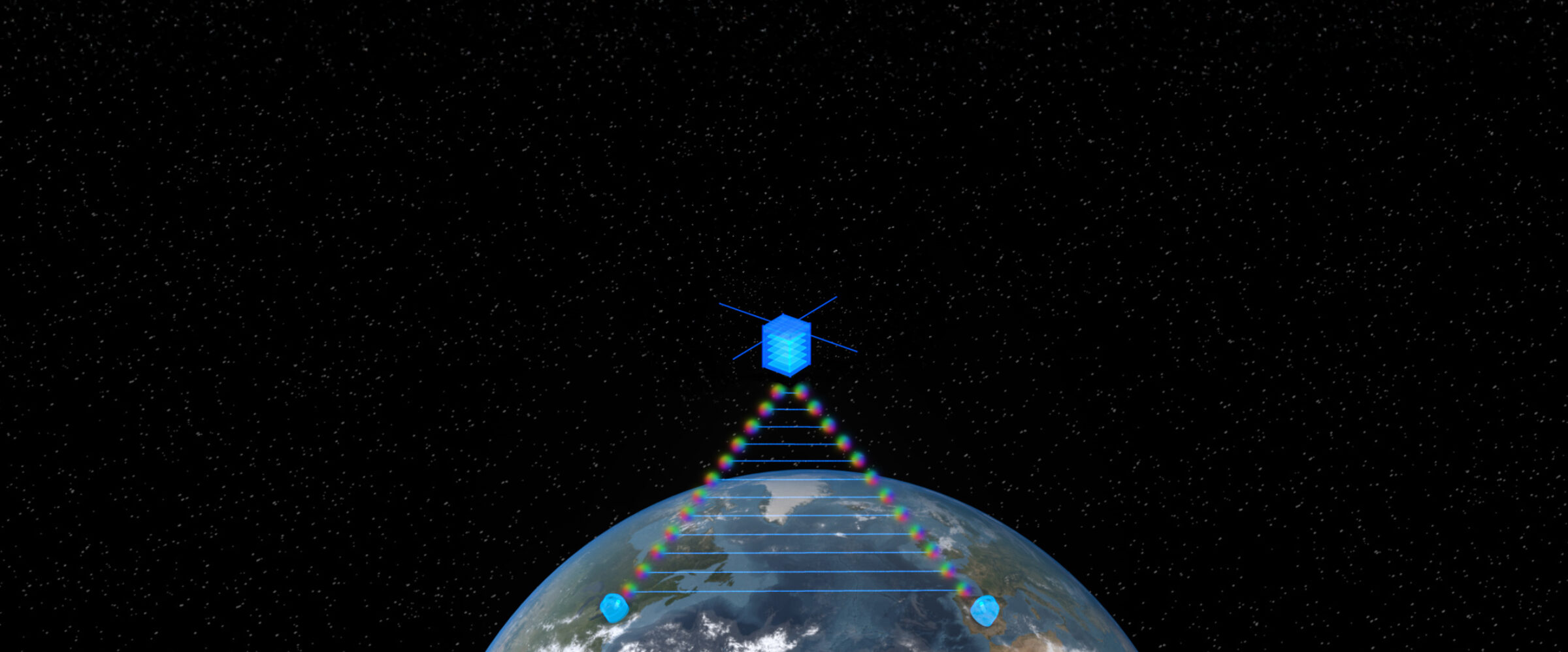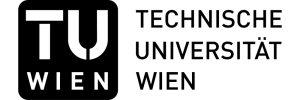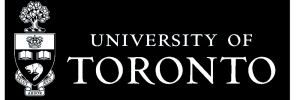Project Partners of HyperSpace
HyperSpace is a joined EU-CAN project
HyperSpace is a joined project of 8 international research institutes and universities. Leading institute is the Fraunhofer-Institute of Applied Optics and Precision Engineering IOF in Jena, Germany. HyperSpace is co-funded by the European Union with Fraunhofer IOF as principal point of contact and the Natural Sciences and Engineering Research Council of Canada NSERC with INRS as principal point of contact.
Project Partners: click on the Institute and find out more about their involvement.
Fraunhofer Institute for Applied Optics and Precision Engineering IOF
Ranging from array projectors in the automotive sector to 3D real-time scanners in production and quantum technologies for tap-proof communication, the Fraunhofer – Institute for Applied Optics and Precision Engineering IOF develops innovative solutions with light for a wide variety of applications. To cover the entire photonic process chain, we use our comprehensive competencies in the areas of optical and mechanical system design, micro- and nanostructured optics, opto-mechatronical as well as precision optical components and systems, functional surfaces and coatings, laser and fiber technology, imaging and sensing technology, and future technologies, such as optical quantum technologies. Innovative solutions arise that open up new fields of application for photonics in science and industry. As part of the Fraunhofer-Gesellschaft, our research is based on a passion for taking on significant challenges and breaking new ground.
Involved Scientists of the Partner
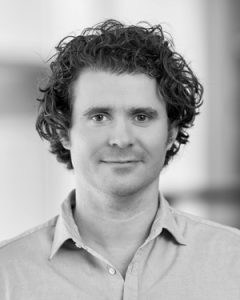 Prof. Dr. Fabian Steinlechner received his PhD in 2015 from ICFO (Barcelona, Spain) for developing ultra-bright quantum sources for applications in Space. Following a position as Senior Scientist at the IQOQI (Vienna, Austria), in 2019, FS became Attract-group leader of the Quantum Communication Technologies group at Fraunhofer IOF (Jena, Germany) focusing on quantum states of light. His work has resulted in over 20 peer-reviewed scientific articles (citations > 1376, h of 12). On January 1, 2024, he was appointed Professor of Experimental Quantum Information at Friedrich-Schiller-University Jena.
Send Email
Prof. Dr. Fabian Steinlechner received his PhD in 2015 from ICFO (Barcelona, Spain) for developing ultra-bright quantum sources for applications in Space. Following a position as Senior Scientist at the IQOQI (Vienna, Austria), in 2019, FS became Attract-group leader of the Quantum Communication Technologies group at Fraunhofer IOF (Jena, Germany) focusing on quantum states of light. His work has resulted in over 20 peer-reviewed scientific articles (citations > 1376, h of 12). On January 1, 2024, he was appointed Professor of Experimental Quantum Information at Friedrich-Schiller-University Jena.
Send Email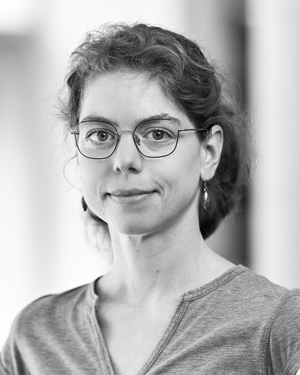 Karin Burger received her PhD in physics in 2017 from LMU (Munich, Germany) for developing microbeam radiation therapy at the Munich Compact Light Source. Having worked as postdoctoral scientist at BAM (Berlin, Germany), she joined the department of Emerging Technologies at Fraunhofer IOF in 2020 supporting a wide range of Quantum-technology research projects, in particular regarding project management, communication, and dissemination.
Send Email
Karin Burger received her PhD in physics in 2017 from LMU (Munich, Germany) for developing microbeam radiation therapy at the Munich Compact Light Source. Having worked as postdoctoral scientist at BAM (Berlin, Germany), she joined the department of Emerging Technologies at Fraunhofer IOF in 2020 supporting a wide range of Quantum-technology research projects, in particular regarding project management, communication, and dissemination.
Send Email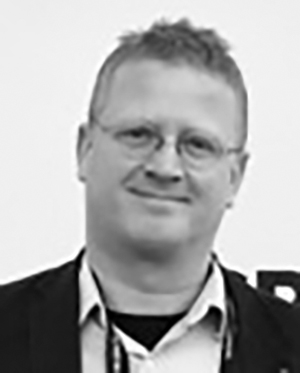 Erik Beckert received his PhD in engineering in 2005 from TU Ilmenau (Germany). From 2005 to 2019 he has been a group leader for micro assembly and system integration at Fraunhofer IOF. Since 2020 Erik Beckert is a department head at Fraunhofer IOF for “Opto-mechatronic Components and Systems”. Erik Beckert successfully acquired various national and international projects with public and industrial funding.
Send Email
Erik Beckert received his PhD in engineering in 2005 from TU Ilmenau (Germany). From 2005 to 2019 he has been a group leader for micro assembly and system integration at Fraunhofer IOF. Since 2020 Erik Beckert is a department head at Fraunhofer IOF for “Opto-mechatronic Components and Systems”. Erik Beckert successfully acquired various national and international projects with public and industrial funding.
Send EmailCentre Énergie Matériaux Télécommunications
Funded in 1969, the Institut national de la recherche scientifique- Centre Energie, Matériaux, et Télécommunications (INRS-EMT, Quebec) has two centers. One center is in Varennes and focuses on energy and material sciences, the other center is in Montreal and focuses on telecommunications. The institute is ranked among the first in Quebec and Canada for research intensity and technology, hosting world-class laboratories with unique equipment for advanced research in quantum photonics, machine learning, artificial intelligence, wireless communications, advanced laser light source, renewable energy, material science, micro-nano fabrication, etc. INRS has more than 40 professors, as well as more than 60 industrial partners in the photonics, telecommunication, artificial intelligence, and quantum sectors, and hosts 16 research infrastructures at the core of the Research & Development. INRS hosts six Canadian Research Chairs, such as in Smart Photonics. INRS significantly invests on the training of both national and international MSc, PhD, and postdoctoral fellows.
Involved Scientists of the Partner
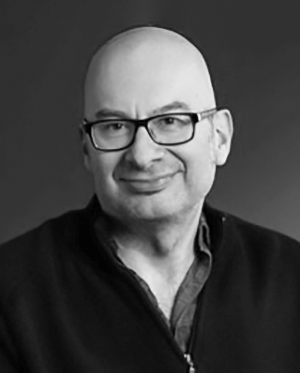 Roberto Morandotti received his M.Sc. degree in physics from the University of Genova, and the Ph.D. degree from the University of Glasgow. Since 2003, he is with INRS-EMT, Canada. He is author/coauthor of over 1,000 papers published in international scientific journals and conference proceedings. His research interests include integrated and quantum optics, as well as Terahertz science and applications. He is the recipient of the NSERC Synergy and Brockhouse Awards.
Send Email
Roberto Morandotti received his M.Sc. degree in physics from the University of Genova, and the Ph.D. degree from the University of Glasgow. Since 2003, he is with INRS-EMT, Canada. He is author/coauthor of over 1,000 papers published in international scientific journals and conference proceedings. His research interests include integrated and quantum optics, as well as Terahertz science and applications. He is the recipient of the NSERC Synergy and Brockhouse Awards.
Send Email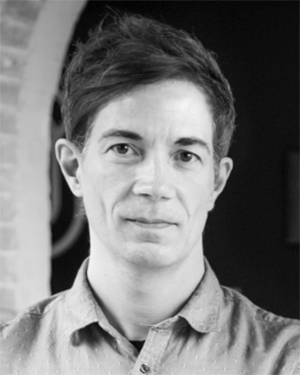 Yoann Jestin received his PhD in solid state chemistry from the “Université du Maine” (France) in 2002. In 2003 he joined the research center on laser and application at the University of Lille and then the CNR-IFN (Trento, Italy) as a postdoctoral fellow. Since 2013, he has been Research Associate at INRS-EMT. In 2015, he founded Ki3 Photonics Technologies, an INRS startup focusing on the development of quantum secure networks.
Send Email
Yoann Jestin received his PhD in solid state chemistry from the “Université du Maine” (France) in 2002. In 2003 he joined the research center on laser and application at the University of Lille and then the CNR-IFN (Trento, Italy) as a postdoctoral fellow. Since 2013, he has been Research Associate at INRS-EMT. In 2015, he founded Ki3 Photonics Technologies, an INRS startup focusing on the development of quantum secure networks.
Send EmailCEA-LETI
CEA-LETI is a technology research institute, expert in micro and nanotechnologies for a wide range of application fields such as healthcare, energy, transport, information and communication technologies.
CEA-Leti has more than 15 years expertise in developing silicon photonic components and circuits for telecom/datacom high-speed optical interconnects. CEA-LETI expertise includes photonic component design, fabrication technology and optical characterization. CEA-LETI is equipped with 11,000m² world-class pre-industrialization clean rooms for the process of 200 and 300 mm SOI wafers. Wafer-level tests of the fabricated components and circuits are performed using fast automatic probers
CEA-LETI mature silicon and silicon nitride photonic platforms provide a reliable basis for the development of key quantum photonics components for quantum encryption applications. In HYPERSPACE, CEA-Leti, in collaboration with partners, will focus on the development of advanced integrated quantum source circuits on silicon and silicon nitride, either delivering entangled photons pairs at GHz generation rate, or delivering hyper-entangled photon pairs.
Involved Scientists of the Partner
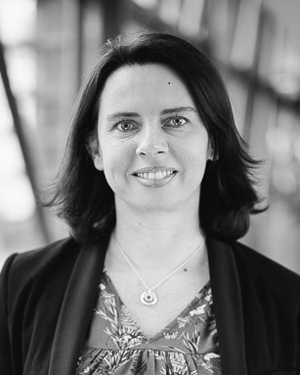 Ségolène Olivier received her PhD in optoelectronics from the University Pierre et Marie Curie, Paris. She joined CEA-LETI in 2003 where she is working since 2012 on the development of silicon photonics integrated components and circuits (active and passive silicon photonics components, hybrid III-V on Si lasers, integrated transmitters and receivers on silicon for telecom and datacom applications). She is currently leading the quantum photonics program at CEA-Leti focused on the development of key building blocks (single photon sources and detectors) for applications in quantum communications and quantum computing.
Send Email
Ségolène Olivier received her PhD in optoelectronics from the University Pierre et Marie Curie, Paris. She joined CEA-LETI in 2003 where she is working since 2012 on the development of silicon photonics integrated components and circuits (active and passive silicon photonics components, hybrid III-V on Si lasers, integrated transmitters and receivers on silicon for telecom and datacom applications). She is currently leading the quantum photonics program at CEA-Leti focused on the development of key building blocks (single photon sources and detectors) for applications in quantum communications and quantum computing.
Send Email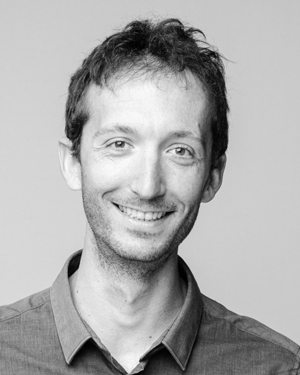 Quentin Wilmart received his Ph.D.degree from Ecole Normale Supérieure (ENS), Paris, in the area of graphene nanofabrication in 2015. He joined CEA-Leti in 2016, working on the design, fabrication and characterization of photonic integrated circuits in silicon for high-speed transceivers in datacenters. He is now senior process integration researcher and project leader in the field of silicon and silicon nitride photonic devices for a broad range of applications, including telecom/datacom, neuromorphic and quantum technologies.
Send Email
Quentin Wilmart received his Ph.D.degree from Ecole Normale Supérieure (ENS), Paris, in the area of graphene nanofabrication in 2015. He joined CEA-Leti in 2016, working on the design, fabrication and characterization of photonic integrated circuits in silicon for high-speed transceivers in datacenters. He is now senior process integration researcher and project leader in the field of silicon and silicon nitride photonic devices for a broad range of applications, including telecom/datacom, neuromorphic and quantum technologies.
Send Email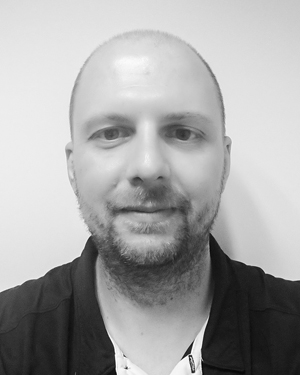 Leopold Virot received his Ph.D. degree from Paris-Sud University in 2014. He joined CEA-Leti as a research engineer in nanophotonics in 2009. In 2011, he started working toward his Ph.D., developping Germanium on Silicon avalanche photodetectors. From 2015, he has been working on the integration of Silicon photonics and microfluidic technologies for MEMS and NEMS based biosensing. Since 2018, his research activity mainly focuses on silicon active and passive optical devices design, modeling and simulation for optical communications, quantum photonics and other emerging applications.
Leopold Virot received his Ph.D. degree from Paris-Sud University in 2014. He joined CEA-Leti as a research engineer in nanophotonics in 2009. In 2011, he started working toward his Ph.D., developping Germanium on Silicon avalanche photodetectors. From 2015, he has been working on the integration of Silicon photonics and microfluidic technologies for MEMS and NEMS based biosensing. Since 2018, his research activity mainly focuses on silicon active and passive optical devices design, modeling and simulation for optical communications, quantum photonics and other emerging applications.
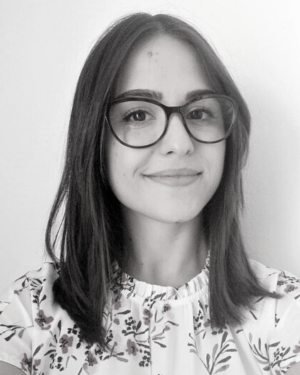 After her master degree at University of Pavia in condensed matter physics and one year of internship at the Silicon Photonics Lab of CEA-LETI in 2021-2022, Sara Congia is now doing a joint PhD program between CEA-LETI and the Quantum Photonics Laboratory of University of Pavia. “Since I have always been interested in experimental and applied physics, I am very happy to do my PhD between academic and applied research, developing integrated photonic components and circuits to make fully-on-chip quantum demonstrations.”
Send Email
After her master degree at University of Pavia in condensed matter physics and one year of internship at the Silicon Photonics Lab of CEA-LETI in 2021-2022, Sara Congia is now doing a joint PhD program between CEA-LETI and the Quantum Photonics Laboratory of University of Pavia. “Since I have always been interested in experimental and applied physics, I am very happy to do my PhD between academic and applied research, developing integrated photonic components and circuits to make fully-on-chip quantum demonstrations.”
Send EmailMERQURY-CYBERSECURITY
Merqury Cybersecurity Ltd is a company born out of the need for the provision of quantum safe solutions in Malta and Europe. Merqury is technical lead for the Maltese EuroQCI national project (PRISM).
Through the PRISM project, Merqury is developing all the necessary tools needed to deploy and manage a quantum network of more than 15 nodes. All developed software is vendor-agnostic and source available. Zero trust systems are always the ideal we aim for.
Involved Scientists of the Partner
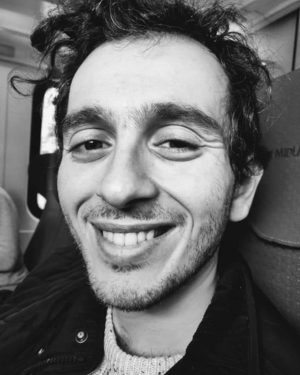 Byron holds a first degree in Mathematics and Physics from the University of Malta. Over the next decade, he gained expertise as a quantitative trader at a hedge fund specializing in automated trading of derivatives and portfolio risk management. In 2021, he earned his M.Sc. in Statistics and Financial Mathematics from the University of Sheffield. His journey continued at Merqury in 2023, where he contributes to global-scale satellite-based quantum communication.
Send Email
Byron holds a first degree in Mathematics and Physics from the University of Malta. Over the next decade, he gained expertise as a quantitative trader at a hedge fund specializing in automated trading of derivatives and portfolio risk management. In 2021, he earned his M.Sc. in Statistics and Financial Mathematics from the University of Sheffield. His journey continued at Merqury in 2023, where he contributes to global-scale satellite-based quantum communication.
Send EmailAtomic Institute of Technical University Vienna
The Atominstitut of the TU Wien has a long tradition in basic science, dating back to the first foundational experiments by Helmuth Rauch and Anton Zeilinger. Today it hosts an exciting mix of experimental and theoretical investigations into the foundations of physics, from high-energy, nuclear, low-temperature to its current particular focus on quantum technologies. Connected to the Viennese quantum science community via the Vienna Center for Quantum Technology (VCQ), the Austrian Excellence Cluster (QuantA) and co-appointments with the Austrian Academy of Sciences.
Involved Scientists of the Partner

Marcus Huber leads the QUIT Physics group at the Atominstitut of TU Wien and also at the IQOQI Vienna of the Austrian Academy of Sciences. The research of his team focuses on the interplay of physics and information, from thermodynamics to quantum communication. He spearheaded the theory of high-dimensional entanglement, its potential advanates and experimental implementation.
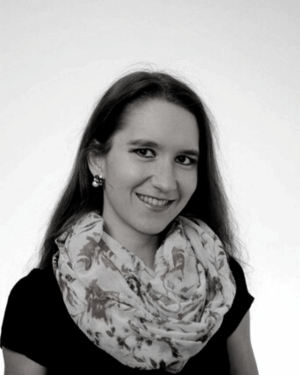 Alexandra Bergmayr is a mathematician, working on high-dimensional cryptography protocols.
Alexandra Bergmayr is a mathematician, working on high-dimensional cryptography protocols.
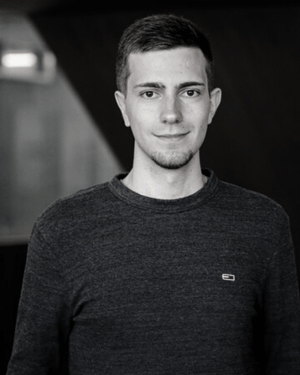
Florian Kanitschar studied physics and mathematics at TU Wien, where he worked on asymptotic security of Continuous-Variable Quantum Key Distribution (CV-QKD) protocols and postselection strategies. This was followed by a research stay in the OQCT/Lütkenhaus Group at the Institute for Quantum Computing (IQC) at the University of Waterloo, where he worked on a finite-size security proof for CV-QKD protocols with discrete modulation and techniques to bound dimensions in security proofs. Florian joined the Huber group at ATI in October 2022 as a PhD student, where he proceeds working on DM CV-QKD and focusses on high-dimensional Quantum Key Distribution.
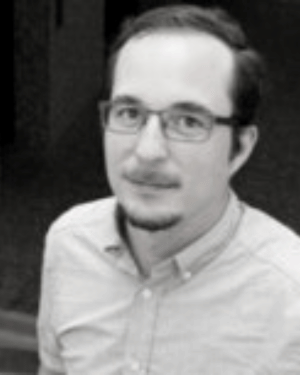 Matej Pivoluska is a senior postdoc and longtime project leader based between informatics and and physics. With a long-standing experience in experimental collaborations, he serves as an interface of theoretical computer science and experiments conducted in HYPERSPACE.
Matej Pivoluska is a senior postdoc and longtime project leader based between informatics and and physics. With a long-standing experience in experimental collaborations, he serves as an interface of theoretical computer science and experiments conducted in HYPERSPACE.
The University of Padova (UPD)
The University of Padova (UPD) is one of the oldest universities in the World and one of the leading Universities in Italy with a long tradition and consolidated reputation for scientific excellence. The QuantumFuture Research group involved in the present proposal (including Prof. Giuseppe Vallone, Prof. Paolo Villloresi and Dr. Francesco Vedovato) pioneered researches in quantum communications in Space, as the first single photon exchange in 2008, the first QKD along a space channel in 2015, the interference at the single photon level in a Space channel in 2016 by using the time-bin encoding, the exchange with a MEO satellite 7000 km apart from Earth 2016. The Group has strong expertise in quantum information, quantum optics, quantum cryptography, quantum communications, quantum random number generation, network security and information theoretic security.
Involved Scientists of the Partner
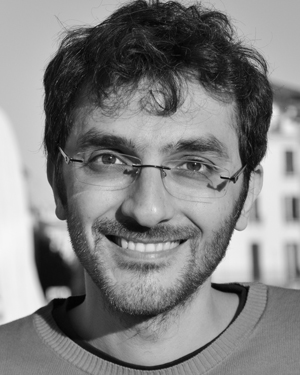 Giuseppe Vallone graduated in Physics in 2002 at the University of Torino, where he did a Ph.D. in 2006 in the framework of String Theory. After that, he was a post-doctoral fellow at the University Sapienza of Roma, focusing his research activity in the generation and manipulation of two-photon entangled states. From 2011 to 2019 he was Assistant Professor (Ricercatore) at the University of Padova, and he is now Associate Professor in this University since 2019. His research interests are quantum communication, quantum information, photon entanglement and Space applications. He is currently the coordinator of the European Project QUANGO and the Italian project QUASAR. According to Google Scholar he has >5600 citations and his h-index is 37.
Send Email
Giuseppe Vallone graduated in Physics in 2002 at the University of Torino, where he did a Ph.D. in 2006 in the framework of String Theory. After that, he was a post-doctoral fellow at the University Sapienza of Roma, focusing his research activity in the generation and manipulation of two-photon entangled states. From 2011 to 2019 he was Assistant Professor (Ricercatore) at the University of Padova, and he is now Associate Professor in this University since 2019. His research interests are quantum communication, quantum information, photon entanglement and Space applications. He is currently the coordinator of the European Project QUANGO and the Italian project QUASAR. According to Google Scholar he has >5600 citations and his h-index is 37.
Send Email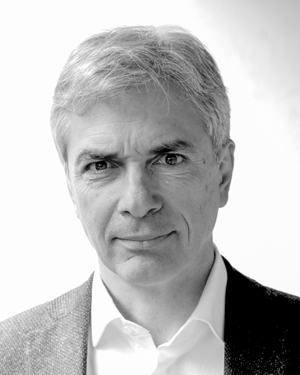 Professor of Physics (Professore Ordinario) at UPD, in the Department of Information Engineering. He served as coordinator in several national and international research projects, including the area of high order harmonics generation, space quantum communication, application of laser in Medicine and Industry.
He led the project for the Italian Space Agency (ASI) to design a space terminal for quantum communications, to be mounted in the International Space Station (ISS). He is also the Group Leader of the QuantumFuture research group, which is active in Quantum Information and Communications. According to Google Scholar he has >11900 citations and his h-index is 52.
Send Email
Professor of Physics (Professore Ordinario) at UPD, in the Department of Information Engineering. He served as coordinator in several national and international research projects, including the area of high order harmonics generation, space quantum communication, application of laser in Medicine and Industry.
He led the project for the Italian Space Agency (ASI) to design a space terminal for quantum communications, to be mounted in the International Space Station (ISS). He is also the Group Leader of the QuantumFuture research group, which is active in Quantum Information and Communications. According to Google Scholar he has >11900 citations and his h-index is 52.
Send Email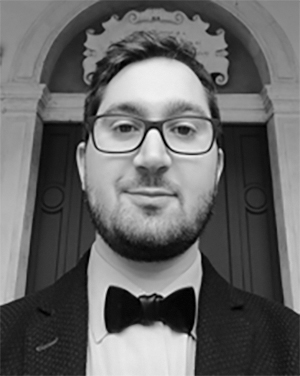 Researcher at the Department of Information Engineering of the University of Padova. He got his MSc in Physics in 2015 and a Ph.D. degree in Space Science and Technology at the University of Padova in 2019. During his PhD in experimental quantum optics, he focused on the realization of quantum optics experiments in Space collaborating with the Matera Laser Ranging Observatory of the Italian Space Agency. He has worked since 2015 in the QuantumFuture Group of the Department of Information Engineering at UNIPD. His expertise is on quantum optics, quantum communication through fiber, free-space and satellite channels. He has various peer-review publications in international journals in the area of experimental quantum optics and quantum key distribution.
Send Email
Researcher at the Department of Information Engineering of the University of Padova. He got his MSc in Physics in 2015 and a Ph.D. degree in Space Science and Technology at the University of Padova in 2019. During his PhD in experimental quantum optics, he focused on the realization of quantum optics experiments in Space collaborating with the Matera Laser Ranging Observatory of the Italian Space Agency. He has worked since 2015 in the QuantumFuture Group of the Department of Information Engineering at UNIPD. His expertise is on quantum optics, quantum communication through fiber, free-space and satellite channels. He has various peer-review publications in international journals in the area of experimental quantum optics and quantum key distribution.
Send EmailDepartment of Industrial and Information Engineering at University of Pavia
The unit at UNIPV has been carrying out both theoretical and experimental research activities in integrated quantum photonic technologies for more than a decade, with particular emphasis on the practical aspects of quantum information processing. These activities have resulted over the years in the demonstration of several integrated devices for the implementation of quantum algorithms, including one of the earliest demonstrations of the emission of entangled photons from a silicon ring resonator, the demonstration of integrated filters and multiplexers and the ability to generate entanglement on a chip using different degrees of freedom.
On the theoretical side the unit has a long-established experience in the modelling and simulation of quantum optical devices, with a particular focus on the generation of nonclassical states of light via parametric processes. The laboratory is fully equipped for the complete characterization and quantum measurements of integrated photonic devices based on strongly confining nanostructures.
Involved Scientists of the Partner
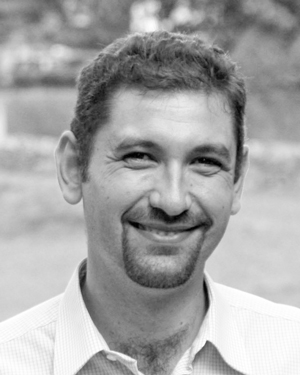 Daniele Bajoni obtained his PhD degree in 2004 from the UNIPV. After holding a post-doc position at LPN-CNRS (FR), he obtained a position as assistant professor in experimental solid-state physics at UNIPV, where he was appointed associate professor in 2014. His research interests include strong light-matter interaction and experimental quantum photonics. He has demonstrated several devices for quantum optics integrated in silicon chips, in particular sources of entangled photon pairs.
Daniele Bajoni obtained his PhD degree in 2004 from the UNIPV. After holding a post-doc position at LPN-CNRS (FR), he obtained a position as assistant professor in experimental solid-state physics at UNIPV, where he was appointed associate professor in 2014. His research interests include strong light-matter interaction and experimental quantum photonics. He has demonstrated several devices for quantum optics integrated in silicon chips, in particular sources of entangled photon pairs.
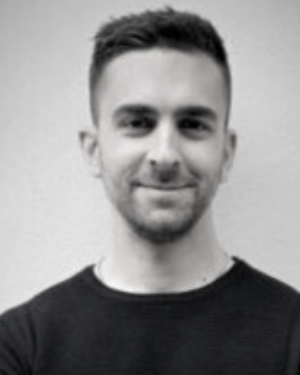 Massimo Borghi is currently a researcher at the Department of Physics of the University of Pavia, Italy. He received the PhD degree in Physics in 2016 at the Nanoscience Laboratory of the university of Trento, Italy. His research interests focus on integrated quantum optics, the generation and characterization of nonclassical states of light, and their applications to quantum technologies.
Send Email
Massimo Borghi is currently a researcher at the Department of Physics of the University of Pavia, Italy. He received the PhD degree in Physics in 2016 at the Nanoscience Laboratory of the university of Trento, Italy. His research interests focus on integrated quantum optics, the generation and characterization of nonclassical states of light, and their applications to quantum technologies.
Send Email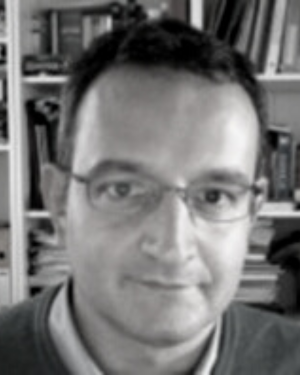 Matteo Galli obtained his PhD in Physics in 2000 at the University of Pavia, where he has been an Associate Professor in condensed matter physics since 2015. He is responsible for the Quantum Photonics Laboratory at UNIPV. His research interests span from radiation-matter interaction in photonic crystals and nanocavities, light emission in silicon, quantum and nonlinear photonics. He actively contributed in these fields by introducing new experimental techniques.
Send Email
Matteo Galli obtained his PhD in Physics in 2000 at the University of Pavia, where he has been an Associate Professor in condensed matter physics since 2015. He is responsible for the Quantum Photonics Laboratory at UNIPV. His research interests span from radiation-matter interaction in photonic crystals and nanocavities, light emission in silicon, quantum and nonlinear photonics. He actively contributed in these fields by introducing new experimental techniques.
Send Email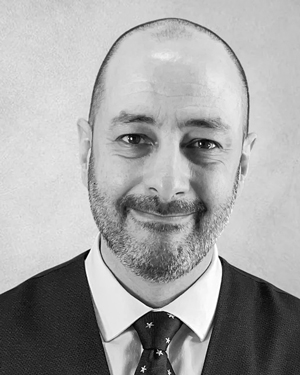 Marco Liscidini received the Ph.D degree in physics from the University of Pavia in 2006. From 2007 to 2009, he was Post-Doctoral Fellow at the University of Toronto. He is currently Associate Professor at the Department of Physics of the University of Pavia, and is technical advisor to Xanadu Quantum Technologies. His research activity is focused on the theoretical study of light-matter interaction in micro- and nanostructures.
Send Email
Marco Liscidini received the Ph.D degree in physics from the University of Pavia in 2006. From 2007 to 2009, he was Post-Doctoral Fellow at the University of Toronto. He is currently Associate Professor at the Department of Physics of the University of Pavia, and is technical advisor to Xanadu Quantum Technologies. His research activity is focused on the theoretical study of light-matter interaction in micro- and nanostructures.
Send EmailUniversity of Toronto
The University of Toronto ranked first in Canada across all five of the broad subject categories evaluated in the QS World University Rankings by Subject 2022 – and remained the only university in the world to rank in the top 50 for 46 specific subjects. Its Centre for Quantum Information and Quantum Control (CQIQC), established in 2004, is the umbrella organization for quantum technologies research at the University of Toronto. It includes 24 core faculty members and 5 associate members across multiple departments, including Physics, Chemistry, Computer Science, Electrical & Computer Engineering, and Material Science and Engineering. Profs. John Sipe (Physics) and Prof. Li Qian (Electrical & Computer Engineering) at CQIQC are experts in quantum optics and quantum communication.
Involved Scientists of the Partner
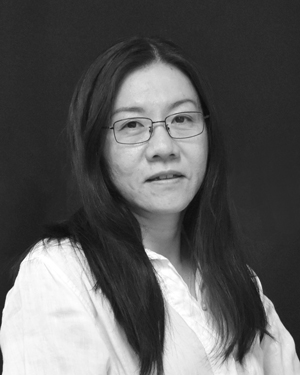 Li Qian’s research focuses on experimental quantum optics and quantum communication, utilizing fiber optics and nonlinear optics in fiber. She is known for developing fiber-based polarization entangled photon sources, which have been commercialized. She is an editor of JOSA B, and a Fellow of Optica.
Send Email
Li Qian’s research focuses on experimental quantum optics and quantum communication, utilizing fiber optics and nonlinear optics in fiber. She is known for developing fiber-based polarization entangled photon sources, which have been commercialized. She is an editor of JOSA B, and a Fellow of Optica.
Send Email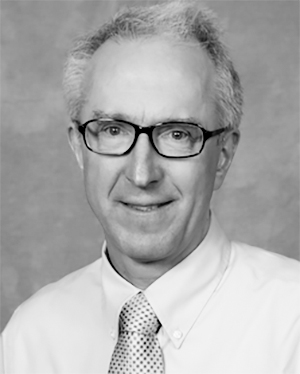 J.E. Sipe is a theorist who works on quantum optics and condensed matter physics, usually in collaboration with experimental groups. He is a Fellow of Optica, of the American Physical Society, and of the Royal Society of Canada.
Send Email
J.E. Sipe is a theorist who works on quantum optics and condensed matter physics, usually in collaboration with experimental groups. He is a Fellow of Optica, of the American Physical Society, and of the Royal Society of Canada.
Send EmailInstitute for Quantum Computing at University of Waterloo
University of Waterloo is a leading global innovation hub that drives economic and social prosperity for Canada and the world. We are home to a renowned talent pipeline, and game-changing research and technology that together create solutions to tackle today’s and tomorrow’s challenges. A strategic integration of research and teaching excellence, the world’s largest co-operative education program, entrepreneurship-intensive programs, and creator-owned IP, and a dynamic learning experience for more than 41,000 undergraduate and graduate students.
The Institute for Quantum Computing (IQC) is a world-leading quantum institute at the University of Waterloo. Founded in 2002, the research at IQC harnesses the quantum laws of nature to develop transformational technologies that will benefit society and drive future economies. Advancements in quantum computation, communication, sensors and materials are happening at the highest international level through the collaboration of computer scientists, engineers, mathematicians and physical scientists.
Involved Scientists of the Partner
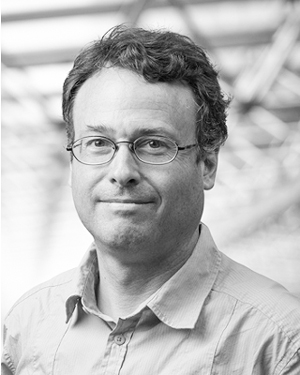 Dr. Jennewein’s main research passion is how to achieve quantum communications and a Quantum Internet on a global scale. He is currently pursuing the use of satellites to accomplish intercontinental distances. His field of research combines information processing technologies with the laws of quantum physics and is at the forefront of research today, giving rise to powerful new information tools such as quantum computing and quantum cryptography.
Send Email
Dr. Jennewein’s main research passion is how to achieve quantum communications and a Quantum Internet on a global scale. He is currently pursuing the use of satellites to accomplish intercontinental distances. His field of research combines information processing technologies with the laws of quantum physics and is at the forefront of research today, giving rise to powerful new information tools such as quantum computing and quantum cryptography.
Send Email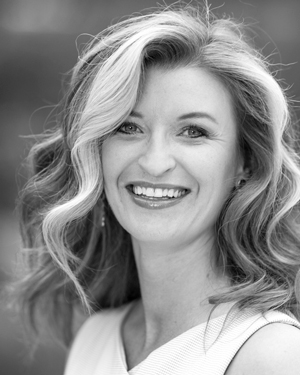 Dr. Kuntz is the QEYSSat Science Team Coordinator, as well was the technical lead for the QEYSSat 2.0 roadmap study. Kuntz received her PhD in Electrical Engineering (Quantum Optics) from the University of New South Wales, Australia, and BSc in Physics from the University of Calgary. She worked in the field of experimental quantum optics and free-space Quantum Key Distribution since 2008.
Send Email
Dr. Kuntz is the QEYSSat Science Team Coordinator, as well was the technical lead for the QEYSSat 2.0 roadmap study. Kuntz received her PhD in Electrical Engineering (Quantum Optics) from the University of New South Wales, Australia, and BSc in Physics from the University of Calgary. She worked in the field of experimental quantum optics and free-space Quantum Key Distribution since 2008.
Send Email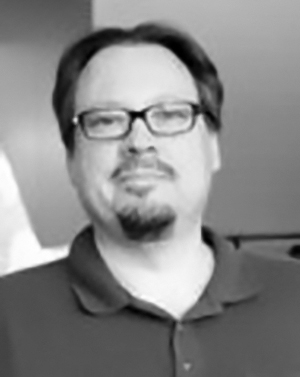 Moffat is the current Program Director for the QEYSSat Science Support contract, as well as the related Quantum Optical Ground Station program. Moffat has worked in a leadership role in the space industry for over 15 years. He also has experience working as a technical lead in the field. Moffat has been working as a Program Director for numerous space-enabled quantum communication initiatives at the University of Waterloo since 2016.
Send Email
Moffat is the current Program Director for the QEYSSat Science Support contract, as well as the related Quantum Optical Ground Station program. Moffat has worked in a leadership role in the space industry for over 15 years. He also has experience working as a technical lead in the field. Moffat has been working as a Program Director for numerous space-enabled quantum communication initiatives at the University of Waterloo since 2016.
Send Email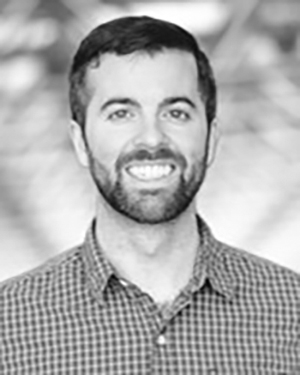 Dr. Godin is the senior technologist for QEYSSat, including the Quantum Optical Ground Station and Science Operation Centre at the University of Waterloo. He received a PhD in Physics (Atmospheric Spectroscopy) from the University of Toronto in 2017. He has been working on payload development and space missions (including the Curiosity Mars rover) since 2017.
Send Email
Dr. Godin is the senior technologist for QEYSSat, including the Quantum Optical Ground Station and Science Operation Centre at the University of Waterloo. He received a PhD in Physics (Atmospheric Spectroscopy) from the University of Toronto in 2017. He has been working on payload development and space missions (including the Curiosity Mars rover) since 2017.
Send Email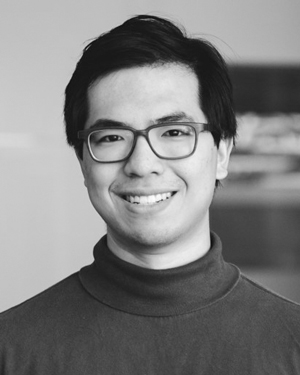 Wilson is a graduate student at IQC, where he is involved in the prototyping of a quantum source and ground station systems to be used in the QEYSSat mission. He obtained his HBSc from the University of Toronto. Wilson is interested in the development of quantum networks and satellites that can enable intercontinental quantum links.
a href=mailto:wfwu@uwaterloo.ca>Send Email
Wilson is a graduate student at IQC, where he is involved in the prototyping of a quantum source and ground station systems to be used in the QEYSSat mission. He obtained his HBSc from the University of Toronto. Wilson is interested in the development of quantum networks and satellites that can enable intercontinental quantum links.
a href=mailto:wfwu@uwaterloo.ca>Send Email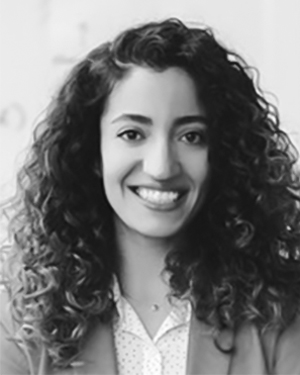 Mohammadi is a Ph.D. student at IQC where she works on the University of Waterloo’s Quantum Optical Ground Station to be used in future quantum missions including QEYSSat. She is eager about quantum communication networks and studies free-space link configurations and properties. Mohammadi received her MSc in Physics at the University of Waterloo and her BSc in Engineering Physics at the University of Tehran, Iran.
Mohammadi is a Ph.D. student at IQC where she works on the University of Waterloo’s Quantum Optical Ground Station to be used in future quantum missions including QEYSSat. She is eager about quantum communication networks and studies free-space link configurations and properties. Mohammadi received her MSc in Physics at the University of Waterloo and her BSc in Engineering Physics at the University of Tehran, Iran.
